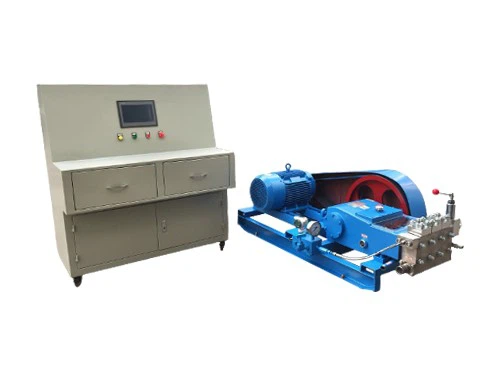1. Pump installation
The installation height is too high: If the installation position of Water Injection Pump is too high from the liquid level of the suction pool, the pressure at the pump inlet will be reduced. When the pressure is lower than the saturated vapor pressure of the conveying liquid at the current temperature, the liquid will vaporize to form bubbles, thereby causing cavitation.
High suction pipe resistance: If the suction pipe is too long, there are too many elbows, the pipe diameter is too small, or there are blockages in the pipe, etc., the resistance to liquid flow will increase, resulting in a drop in pressure at the pump inlet and an increase in the possibility of cavitation.
2. Liquid properties
Too high temperature: When the temperature of the liquid rises, its saturated vapor pressure will also increase. When the liquid temperature reaches a certain level, making the pressure at the pump inlet lower than the saturated vapor pressure at the corresponding temperature, cavitation is likely to occur. For example, in the high temperature environment in summer, if the cooling measures for Water Injection Pump are not in place, this situation may occur.
High viscosity: If the viscosity of the liquid is too high, the friction of the liquid will increase when it flows in the pipe and pump, resulting in increased pressure loss and reduced pressure at the pump inlet, which will cause cavitation. Moreover, high viscosity liquid will also affect the energy transfer of the impeller to the liquid and reduce the performance of the pump.
3. Pump operation
Excessive flow: When the Water Injection Pump operates under conditions exceeding the rated flow, the flow velocity of the liquid at the impeller inlet will increase, resulting in a decrease in pressure and easy cavitation. In addition, excessive flow may also increase the axial force of the pump, affecting the stability and service life of the pump.
Too high speed: Too high speed will cause the liquid at the impeller inlet to obtain a greater centrifugal force, thereby reducing the inlet pressure and increasing the risk of cavitation. At the same time, high speed will also increase the flow loss in the pump and reduce efficiency.
4. Other aspects
Intake pipe leakage: The poor sealing of the suction pipe causes air to enter the pipe, which will reduce the effective pressure of the liquid and cause cavitation. Air entry will also affect the normal operation of the pump, resulting in unstable flow and head.
Impeller wear: The impeller is a key component of the Water Injection Pump. After long-term operation, the impeller may be worn. Impeller wear will change its shape and size, affect the flow state of the liquid in the impeller, make the pressure distribution at the impeller inlet uneven, and easily produce local low-pressure areas, thus causing cavitation.

